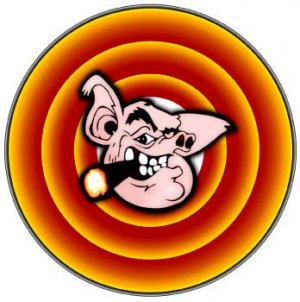LES APÉROS INDUSTRIELS, C'EST REPARTI !
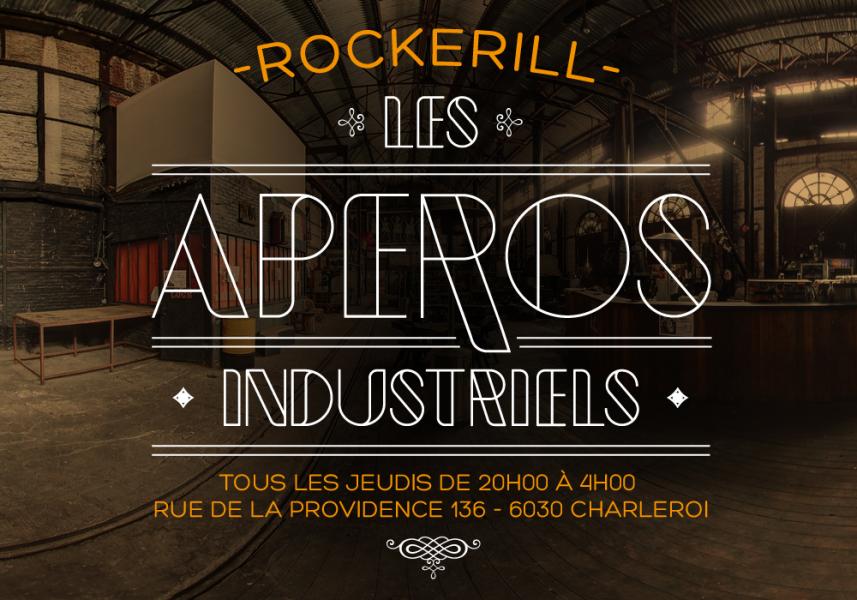
Après cet hiver interminable et ce printemps hivernal, le Soleil est enfin de retour et la saison des apéros reprend !
Rendez-vous au Rockerill new look ce jeudi 2 mai dés 20 h. pour une soirée musicale et conviviale : 2 expos à voir dés l'après midi : "Empreintes" en collaboration avec le PAC (jusque 21h.) et l'expo des têtes de l'art.
Après cela, place à la musqiue avec The Glimmers présentés par les 3 mousquetaires du Rockerill : Globul, Fabrice Lig et Ralph Storm; Les Dirty Monitors se chargeront également de vous en mettre plein la vue avec leurs vidéo-projections industrielles
Entrée gratuite & Service d'ordre assuré
THE GLIMMERS (BE)
FABRICE LIG (BE)
RALPH STORM (BE)
GLOBUL (BE)
VJ
DIRTY MONITOR (BE)
EXPO
EMPREINTES (BE)
LES TÊTES DE L'ART (BE)
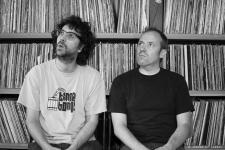
Real name / Mo Becha, David Fouquaert Moniker(s) / Mo & Benoelie BORN M: 1970. In Ghent, Belgium. B: 1969. In Ghent, Belgium. FAMILY M: There was a bit of music in the house, a bit of African music, Arabic music and Michael Jackson. But we had a lot of radio and recording tapes from the radio when I was 10-years-old or something. The jukebox in my parents’ bar was owned by a company that delivered 7 inches, whenever they replaced the selection we got to keep what they took out..They were all scratched and had played on the jukebox 100-times already. But it was still cool to have those to play around with and listen to. B: My parents used to have Clubs and DJ Bars in the late 70s in Ghent. My father was the DJ, he played a lot of Rock and Seventies stuff. I remember at the age of 8 I saw him playing records. I wanted to do that as well! My love for music and dj-ing definitely started there. MUSICAL ROOTS M: The first 7-inch I bought with my own money was Tainted Love by Soft Cell, we still have it in our record collection. By the age of 11, I frequently visited my Aunt in Amsterdam and I remember the music on the radio was brilliant.. I recorded a lot of tapes there and on one of those tapes there is a track, that to this day, I still haven’t found out what it is – I only know that at that time I had a great feeling about it and I hope that one day I’ll bump into it so I will finally be able to rest. B: Mostly popular music, the stuff that the local radio was playing. I remember buying my first 7-inches in the early 80s, Rockwell for example . Then the Break Dance and Electro Boogie hype came over from New York. Movies like Beat Street and Wild Style were available on VHS and I saw them maybe a hundred times. My friends were into the breakdancing, but I was more interested in the musical part. I started buying the records and started imitating the scratches by DST or Flash. From those days on, you could say that I was really bitten by the music bug. DJING M: We have been DJing for about 20-years now. Early November 1987 was really our professional nightlife debut. We started playing in a club for 300-people, called Fifty Five. A small, dark, medieval basement with a HUGE soundsystem. We played there every Saturday from 10pm till 8/9am. Throughout the night we had to play really different sorts of music because at 10 o’clock all the youngsters came in and wanted to hear the new beat and pop stuff, but then a couple of hours later the audience changed – the more experienced clubbers came so we had to change the music – and then at the end it was the old rockers coming in, sipping whiskeys at the bar having us playing the Rolling Stones. B: It was an extremely good learning school and I think that is really the foundation of how we play now and how Ghent got its sound. We were so focussed on covering the whole musical landscape as much as possible, pleasing everybody who came in, however we had 10-11 hours to prove ourselves, compared to having only one-and-a-half - two-hours sets nowadays. ESKIMO M: Eskimo started out organizing parties in an old underwear factory. The parties were very successful, attracting more than 7000 people at its peak! There were five different rooms; a ragga/RnB room, another more housy room, a drum and bass room, an all-weird-cocktailmusic-60s–stuff-with–everything-mingled-in room. It was very diverse and you had a lot of different styles of people coming in. Everybody could go to their favourite room or could bounce from one room to another. It was a very successful approach, especially in a small city like Ghent. It had a good vibe. B: NEWS then approached us to make a compilation, an Eskimo compilation. We thought that was great idea and in 2000 we did our first. It was quite successful, even getting great reviews in UK magazines. Then we did the second one, third one, fourth one.. We did 8 Eskimo compilations in total. We then started inviting different artists to do compilations and soon afterwards singles started to be released as well and by then Eskimo had become a label, releasing artist singles and albums. When did you guys start seeing music as a profession? B: We don’t see it as a profession. We don’t work. M: We are unemployed. We just play music. LABELS & PRODUCTION M: We started remixing a few years ago. Something that has built up very nicely over the years. The last ones we did were Freddy Mercury and Roxy Music, and currently we are doing Snow Patrol. B: The last compilation we did was DJ Kicks which was released in April 2005. In the meantime we started to produce our own music. We’ve been working and jamming with different musicians, different producers and we are releasing all those jams on our own label called Diskimo. M: We’re indies now! But we work really lo-fi. The records look like bootlegs. It’s good fun to release your own music. We don’t do promotion, we don’t even send CDR’s out. B: We’ve had great times at Eskimo, and it was amazing being part of it. Now Dirk is doing a great job with the label and we will be doing a new thing on Eskimo somewhere in Spring 2007. DJING M: It is very nice to play on something very underground for 150-people on a Friday, and then be playing for a crowd of 10,000 on a Saturday. We will play totally different sets. The set for 150 people will be much more intimate whereas the other one will be much more energetic. Playing at all these different kinds of gigs and different audiences keeps us alert musically and it keeps us sounding fresh. If we always had to play the same kind of music, the same kind of sound, we would be bored. B: We like to change and play for different crowds. We really don’t know what we are going to do beforehand, we just arrive with our recordings and we see who else is playing and what the vibe is like and we’ll create our set so that fits in there. It’s the audience which decides how far we can go. FABRIC M: The first time we played at Fabric was on my birthday, 13 December 2003. Almost three years ago. It was a great atmosphere. B: We had played at The End and Plastic People and a number different clubs and venues in London but not Fabric, and it was great to be there on a Friday night. FabricLive. We fitted in there. It was working. M: It is always very nice to be able to play on the best equipment around. It is so well organised it suits the name – Fabric. B: If you’re playing Spain or France or wherever, everybody knows Fabric and everybody looks at the website to see who is playing, who is on the CDs, whatever. So I think that it is an institution that a lot of people in Europe and beyond look at. M: But also the way they approach a night, it is amazing to see such a big club every week, Friday and Saturday, with such an underground line-up… and it works. People know what to expect and I think that Fabric has enough power to promote the different acts that they like. They present to the people “look, this is what we like, this is what we have at Fabric, have a listen.” People come and they accept that. I don’t think there is a club anywhere else in the world who is doing this week after week after week. THE FUTURE B: Well, FabricLive is another step into our future. We’ll continue DJing all over the world, which is nice. Meanwhile we’ll be releasing a lot of stuff on our own label and seeing how that goes. M: Every month, every five-weeks, we will have a 12-inch coming out on Diskimo We have loads of stuff lined up already. So that‘s a lot of music being put available. And somewhere early next year, we’ll do something new on Eskimo.
House / Detroit / Techno
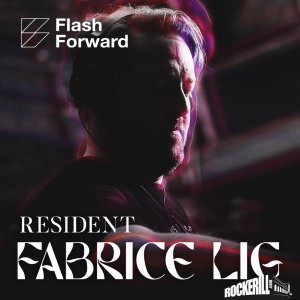

Pionnier de l'electronic body music, Front 242 est sans aucun doute la référence électro de notre royaume. Issu du mouvement industriel assimilé au mouvement new wave des années 80, le groupe a livré une dizaine d'albums au long de sa carrière dont le fameux "Front by Front" en 88. Leur influence est aujourd'hui considérable et le front a été cité par Marilyn Manson, nine inch nails, prodigy et new order pour ne citer qu'eux…
Né en 1974 Ralph a commencé à s'intéresser à la musique dès l'âge de 13 ans avec les sons de prince et de la funk de Motown.
Après un passage par la new wave de Nitzerebb, Front 242, Fad Gadget... il découvrit en 1987 les sons de la New beat et de l'Acid House de cette époque.
Des groupes tels que Phuture (acid Tracks), Kaay Alexi Shelby, Jack Frost l'ont fortement influencé. En 1992 il commença sérieusement le djing dans un style plus orienté vers la dark techno de détroit et l'acid de Brooklyn. C'est à travers ses bookings dans toute la Belgique qu’il pu peaufiner son art.
Il est également co-organisateur des soirées (Always Underground,Sound Memory) et co fondateur et producteur sous le label Atlante.
Electro / Industrial
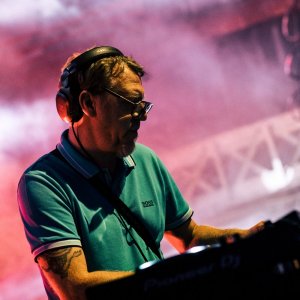
Organisateur depuis fin des années 90 et dj depuis plus de 20 ans, voilà les deux grandes passions de Globul. Son parcours s'initia fin des années septante en découvrant des artistes tels Pierre Henry, ou Marvin Gaye, mais surtout cet énigmatique groupe appelé "Kraftwerk". le ton etait donné ! S'en suivira un engouement pour toute la génération new wave, punk & industrielle, à travers d'artistes comme The Clash, Tuxedemoon, Grauzone, Front 242, Nitzerebb ou Neon Judgment, Globul commença à animer de nombreuses soirées et s'occupa de plusieurs émissions de radios locales. Fin des années 80, il se rendit en Espagne ou il fut résident dans différents clubs à San Sébastian et Santander. Ses sets sont connus pour être variés et fortement chargés en sonorités disco, acid, Tech, Detroit, un mélange éclectique entre les sons Old School & New school : la deep-tech & les rythmes tribaux, Son plaisir, c' être en osmose totale avec le public grâce à une programmation originale et non linéraire.
VJ
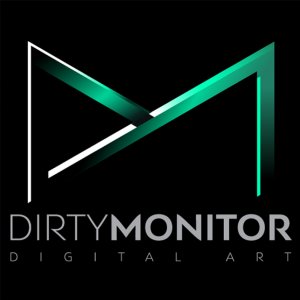
Au fil des années, le collectif s'est fait un nom grâce à ses collaborations avec de grands noms du secteur événementiel, mais aussi le travail acharné et la passion de son équipe, qui s'est complétée avec des graphistes, photographes, matte painting et concepteurs. Performances lives, installations, soirées...
Peu importe l'atmosphère désirée, les structures ou les surfaces, Dirty Monitor offre au public une expérience visuelle unique.
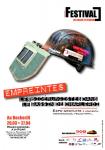
Festival De Chair et d'Acier
Exposition gratuite + concerts, performances et projections au Rockerill du 29 mars au 27 avril. Un projet collectif qui questionne en profondeur la mémoire des travailleurs de la sidérurgie dans notre région. Une mémoire vive, quoi qu’on en dise.
Car s’il est vrai que la sidérurgie se conjugue de plus en plus au passé, celle-ci n’a pourtant pas entièrement disparu du paysage. Mieux, nous sommes persuadés que la culture de ceux qui, par leur travail, ont contribué à la prospérité de cette industrie, continue d’imprégner l’inconscient collectif des gens du Pays noir. C’est cette culture ouvrière sidérurgique contemporaine que nous entendons mettre en valeur au printemps 2013. En d’autres termes : tout ce qui, dans le quotidien des individus, a été conditionné ou façonné par le travail dans la sidérurgie. Un rapport au monde particulier que nous voulons mettre en lumière à travers l’environnement professionnel des travailleurs (les rythmes de l’usine, la dangerosité des tâches, les rapports humains au sein de l’entreprise, les rapports interculturels...) ou leur environnement social (la vie de famille, l’immigration économique, la vie culturelle et associa- tive, les relations sociales...).
-Quand? Du 29 mars au 27 avril 2013
-Où? Au Rockerill (site de la providence), rue de la providence 136 à Marchienne-au-Pont
-Info? 071/79.72.08 - 0479/23.58.74 - info@pac-charleroi.be
-Le programme
EMPREINTES. Les sidérurgistes dans le bassin de Charleroi. Expo gratuite tout au long de l'évènement ouverte du mardi au dimanche de 10h à 18h.


